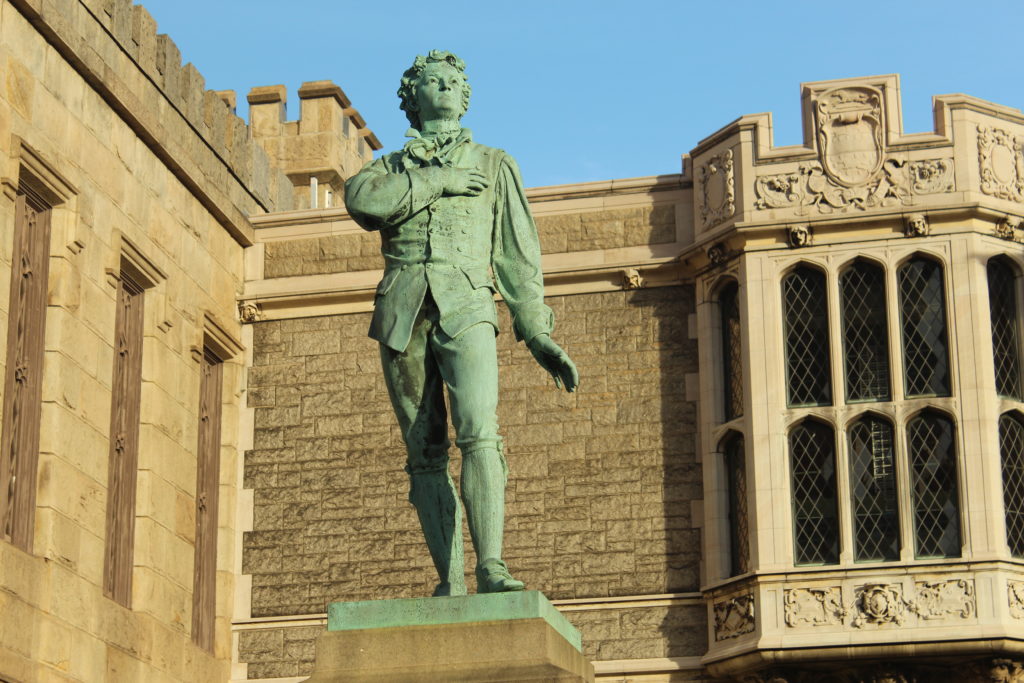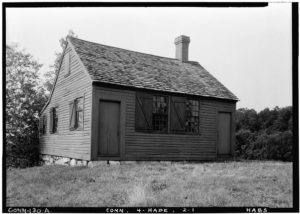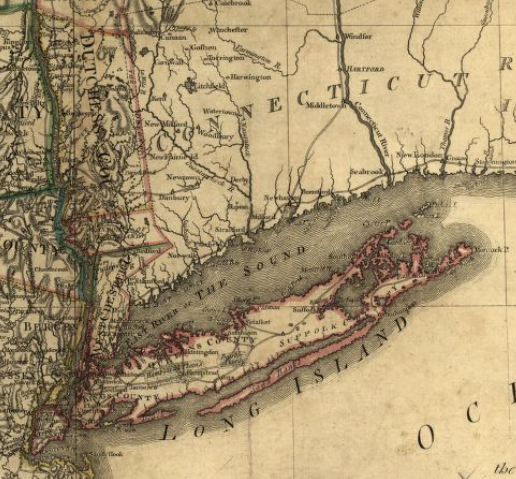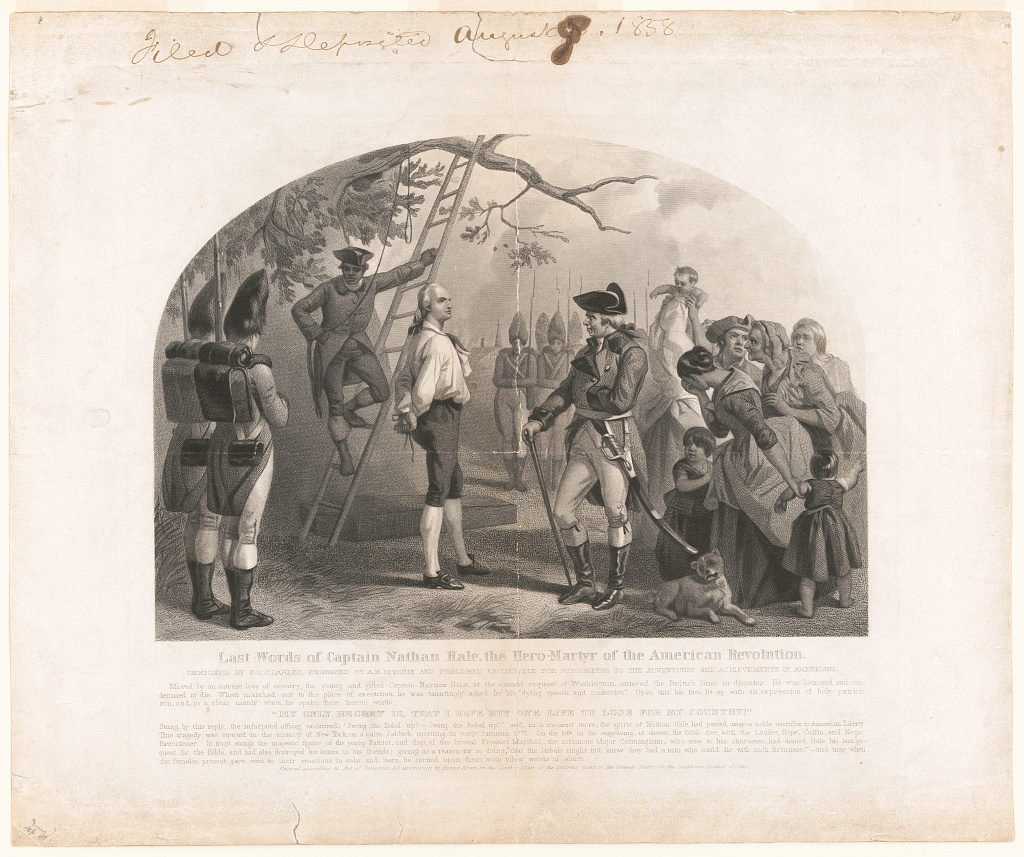State Hero Nathan Hale

Nathan Hale. Photo: Connecticut Explored
It’s hard to imagine what Nathan Hale’s last days were like. He was just 21 years old when he died. The British hanged him September 22, 1776 for spying. It is said that at his execution, he declared, “I only regret I have but one life to lose for my country.” He is remembered for these words of bravery, sacrifice, and patriotism.
Nathan Hale was born in 1755 on a farm in Coventry, Connecticut. He was the 6th of 12 brothers and sisters. His first schooling was by the local minister. In 1769 he and his brother Enoch were sent to Yale College in New Haven. Enoch was 16 and Nathan was 14.
Living in a city was a new experience for the two brothers. New Haven was brimming with new ideas. Those new ideas included revolution and the possibility of a new nation. Nathan and Enoch graduated in 1773. Nathan was 18 years old.

Schoolhouse in East Haddam where Nathan Hale taught for a year. Library of Congress
Nathan took a job teaching in a one-room schoolhouse in East Haddam. East Haddam is on the Connecticut River. By the 1750s, the town had more than 2,000 residents. Residents made their living by farming, shipbuilding, tanning, and blacksmithing.
Nathan missed living in the city. After a year, he took a new teaching job in New London. He had 30 male students and taught a class of girls during the summer.
He was offered the position of master of a private school. But the Revolutionary War broke out. It was April 1775. Nathan went with the local militia to fight in Boston. He was now a rebel soldier. He became first lieutenant in the 7th Connecticut Regiment.
By the following spring, he was in New York City. His regiment was trying to defend the city from British attack. By early September, the British controlled western Long Island. They were getting close. General George Washington needed to know when the British planned to attack New York City. Nathan was persuaded to go behind enemy lines to try to find out the information.

Detail of a 1776 map showing Connecticut, Long Island, and New York City
Nathan needed to get to Long Island without being noticed. He travelled to Norwalk, Connecticut. There, he found a boat that would take him across Long Island Sound. He left his uniform, silver shoe buckles, and other possessions behind. Under the cover of darkness, he made the crossing.
But he was too late. The British invaded New York City on September 15, 1776. The following day, he was captured by the British near Flushing Bay, Long Island. He was brought before British General William Howe. Nathan stated his name, rank, and the purpose of his mission. He was not given a trial. General Howe sentenced him to hang the next day.

The hanging of Nathan Hale by the British in 1776. Library of Congress
Nathan spent his last night with a British soldier named John Montresor. Captain Montresor witnessed the hanging. Afterwards, Montresor was ordered to deliver a message from General Howe to General Washington. He brought the news of Nathan’s capture and death. It is through Captain Montresor that we know of Nathan Hale’s last hours. He told of Nathan’s dignity, devotion to the patriot cause, and his last words, “I only regret that I have but one life to lose for my country.”
This article is based on:
“Captain Nathan Hale,” by Mary J. Ortner, Ph.D., connecticutsar.org/captain-nathan-hale-1755-1776-2/
“Nathan Hale: Icon of Innocence,” by Mary Beth Baker, Connecticut History, Spring 2006
“Town History,” easthaddam.org/History-1756/





